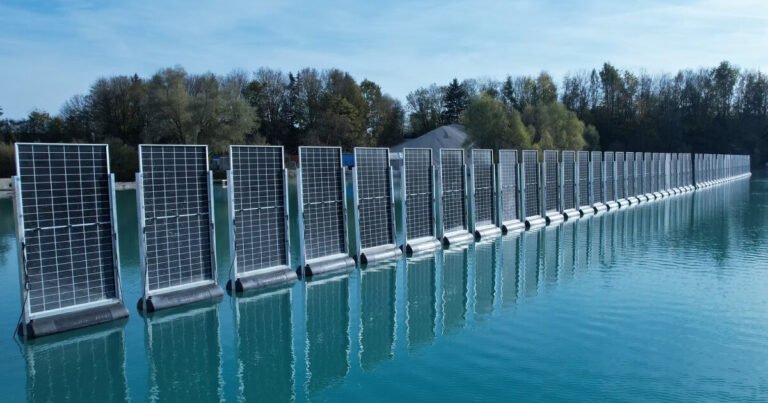Solar-Powered DJ Parties Move From Novelty to Carbon-Savvy Community Outreach
On a bright April afternoon at UC Berkeley, a small crowd gathered on the West Crescent Lawn for Sunstock — a free concert powered entirely by portable solar generators. Local student bands played through equipment fed by rooftop panels and battery trailers while booths from campus sustainability groups shared how to compost and save energy at home. What began as an idealistic experiment by an indie band and a handful of students a decade ago is now part of a growing movement: DJs, small promoters and universities are using solar power not just to cut generator noise, but to build outreach, education and community around clean energy. According to USC Today, 2025, the musician Skylar Funk and his group Trapdoor Social helped seed Sunstock with a solar trailer and the vision of “a positive space for music and sustainability to intermingle.”

From One-Off Demos to Reliable Rigs
Five years ago, a solar-powered DJ set was usually a novelty — a single act plugging into a small battery rig to show what’s possible. Today, companies and collectives are designing full festival-grade solutions. In France, a start-up built a self-contained solar DJ booth and speaker stacks designed to run turntables, CDJs and amps for a crowd of up to 1,500 people for ten hours on a single charge; the company arranged regional networks of rigs so transport distances stay short and the climate gains aren’t erased by long diesel van journeys. According to Resident Advisor, the system toured a string of French events as a proof of concept.
The technical changes behind this shift are practical and incremental: more efficient amplifier designs, low-draw horn speakers, larger and cheaper lithium battery banks, and solar panels optimised to sit on trailers and booths. Engineers who build these rigs focus on energy budgeting — matching expected festival hours and audience size to batteries and charge rates — and on logistics, so local reuse and short transport replace long-haul truck deliveries. Julien Feuillet, an engineer associated with one French maker, described the idea of keeping rigs geographically networked so you don’t “defeat the whole purpose” by hauling them hundreds of miles on a diesel truck; the emphasis is on matching the unit’s radius to local events to keep the emissions math honest.
Why the Shift Matters — What The Evidence Shows
Live music and outdoor events have a significant carbon footprint, encompassing everything from diesel generators and crew transportation to food vendors and waste management. That footprint has drawn scrutiny from artists and researchers alike, and the message is straightforward — clean power matters. A major arts-sector organisation tracking environmental practice across venues and festivals has documented the sector’s push to measure and reduce impacts, noting progress in energy sourcing and waste diversion in recent annual reporting.
A 2024 report by Julie’s Bicycle found that creative-sector organisations that measure and act on sustainability can significantly reduce emissions by switching energy sources, improving logistics, and reducing single-use waste.
High-profile tours have helped push the conversation into the mainstream. Coldplay’s recent touring strategy, which included on-site renewable sources, energy-storing show batteries, and other measures, produced measurable reductions in emissions when compared with the band’s previous tours. According to Coldplay’s own sustainability reporting and reporting in The Guardian, their world tour measured substantial reductions in CO₂ per show and experimented with solar, kinetic and battery systems to shrink fossil-fuel reliance. These moves matter because they show organisers and technicians that large-scale, renewable-first production is possible — and that the technology scales from campus concerts to stadiums.
Smaller events show the same potential at the grassroots scale. Sunstock and similar campus-run solar events demonstrate that a few kilowatts of clean, quiet power can run stages, PA systems and vendor kiosks while offering a live education moment: audiences see solar in action, ask questions, and leave with a clearer sense of how renewable power works in everyday settings. According to event listings and local coverage, Sunstock continued as an annual community fixture into 2025, reinforcing that the model can be maintained by student organisers and local volunteers.
Community Impact and Practical Outcomes
Solar-powered parties do more than lower emissions; they create a different social dynamic for events. They remove the stench and rumble of diesel generators, so concerts can be hosted in neighbourhoods that would otherwise reject loud, smelly setups. They allow promoters to bring music to public squares, parks and campuses, where connecting with passersby — families, seniors, students — turns a gig into an outreach moment. They also make sustainability tangible: when a young audience watches a set run off battery power recharged by the sun, abstract climate solutions become tangible and local.
The people on the ground tell the same story. Skylar Funk, who helped found Sunstock and built a solar trailer to power bands, said the goal was to “make the statement that the world needs clean energy” and to excite people about action as much as about music. That mix of cultural appeal and practical demonstration turns a party into a teaching moment and can open doors for partnerships with local utilities, sustainability offices, and campus programmes. According to Buzzbands and USC Today coverage of Sunstock’s origins and evolution, that personal story is exactly why student teams keep the festival running each year.
There are measurable co-benefits too: quieter events reduce noise complaints and expand possible venues; solar rigs with batteries double as emergency power for community centres in outages; and events that prioritise local suppliers reduce transport emissions while supporting small businesses. Festivals that have piloted renewable stages reported improved waste-diversion and attendee satisfaction scores, suggesting the environmental approach can improve local relationships as well as the climate ledger. Julie’s Bicycle’s sector-level reporting shows that when events capture data and set targets, they consistently find multiple wins across energy, waste and community engagement.
A short case table (real examples)
| Project / Event | Year | Scale | Notable result |
|---|---|---|---|
| Sunstock (UC Berkeley/Trapdoor Social) | 2016–2025 (student-run) | Campus festival, thousands over repeated years | Student-led solar trailer powered stages and created sustainability outreach. |
| Pikip Solar Speakers (France) | 2023 tour | Mobile DJ rigs for 1,000–1,500 audiences | Self-contained solar DJ booth toured French festivals as proof of concept. |
| Solar Sound Festival (Seinäjoki, Finland) | 2024 | Two-day stadium festival, ~13,000 attendees | Technical delivery used solar-focused systems as part of the festival’s green profile. |
| Coldplay ‘Music of the Spheres’ (sustainability measures) | 2022–2025 | Stadium world tour | Large-scale experiment in renewable shows power and energy-reduction measures. |
The case table above draws on public reporting and event pages to describe varied scales of work: campus, regional festival, national product trial and stadium-level experimentation. Each shows a different way that solar and battery technology are being applied to live sound and to outreach.
Practical lessons from organisers and engineers are consistent: match energy systems to expected load; favour local re-use over long-distance transport; build redundancy into battery capacity for cloudy days; and pair the technical demo with a clear educational message so the audience understands the climate and local benefits. According to technical press and product interviews, makers of solar speaker rigs also stress that efficiency — not simply bigger panels — is the key to reliable performance at events.
Conclusion: Actionable Advice for Organisers, DJs and Communities
If you run events, DJ on the weekends, or organise campus fairs, here are practical steps to move from novelty runs to sustained, carbon-savvy outreach: start small and measure; borrow or rent a solar trailer before you buy; partner with student sustainability groups or local NGOs to turn a set into a teachable moment; design your supply chain regionally to avoid defeating clean-energy gains with long diesel trips; and record energy use and waste diversion so you can make data-driven improvements. For headline decisions, prioritise battery capacity that covers the longest possible run-time you need, and select PA and lighting gear designed for efficiency rather than maximal, unused wattage.
Artists and technicians thinking big should document outcomes. When organisers report metrics — kilowatt-hours supplied by solar, percentage reduction in generator-hours, waste diversion rates — they create the evidence that helps funders, local authorities, and venues support more renewable-powered events. The report by Julie’s Bicycle showed that measured, incremental steps across events lead to significant emissions reductions when scaled across a sector. That data supports grant applications, sponsorship pitches and city permits — and it helps shift industry norms.
Finally, remember the social return. Solar-powered gigs change the conversation in a neighbourhood when they include free learning moments, youth-focused workshops, or partnerships with food programmes and local charities. The best projects don’t simply replace diesel with panels; they marry spectacle with substance so a single afternoon of music can seed long-term community engagement with clean energy. As artists from grassroots organisers to global acts have shown in recent years, that combination of technical possibility and social purpose is what shifts an idea from novelty to normal.







